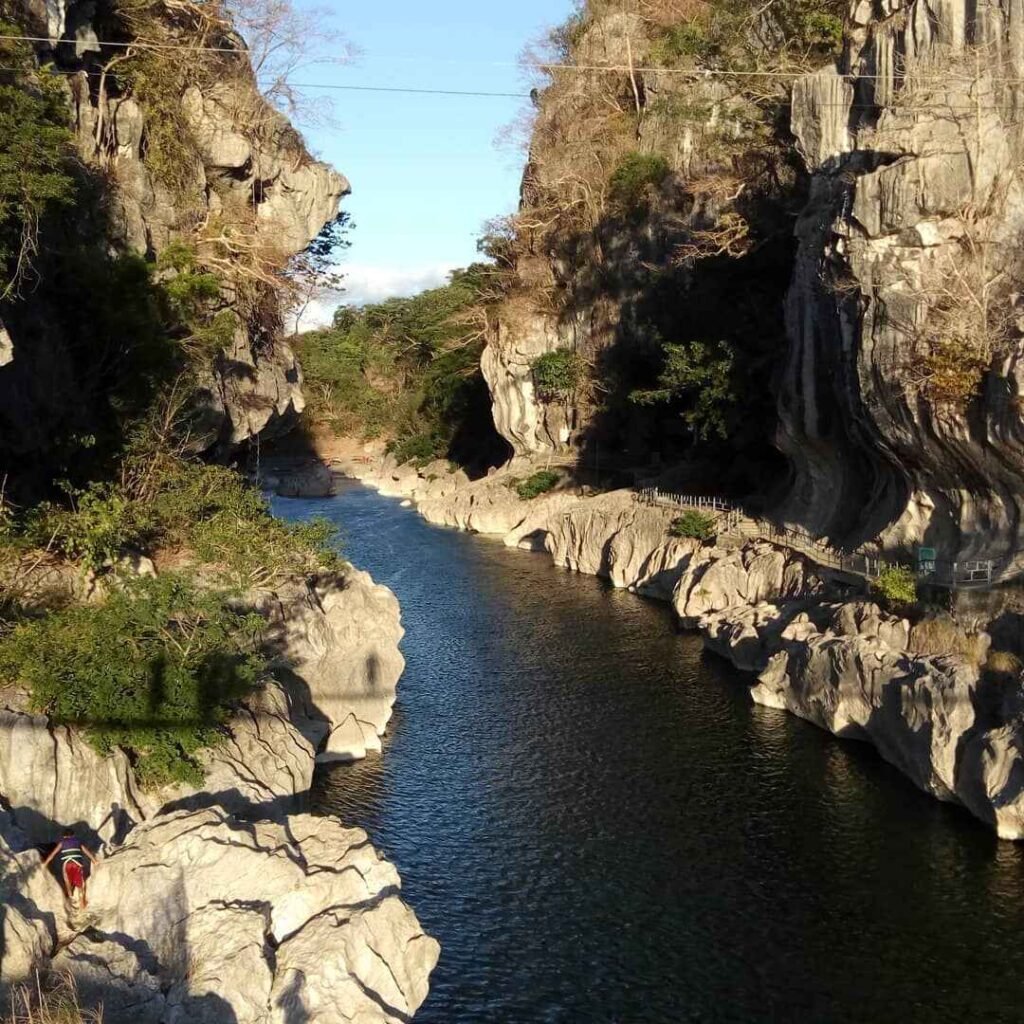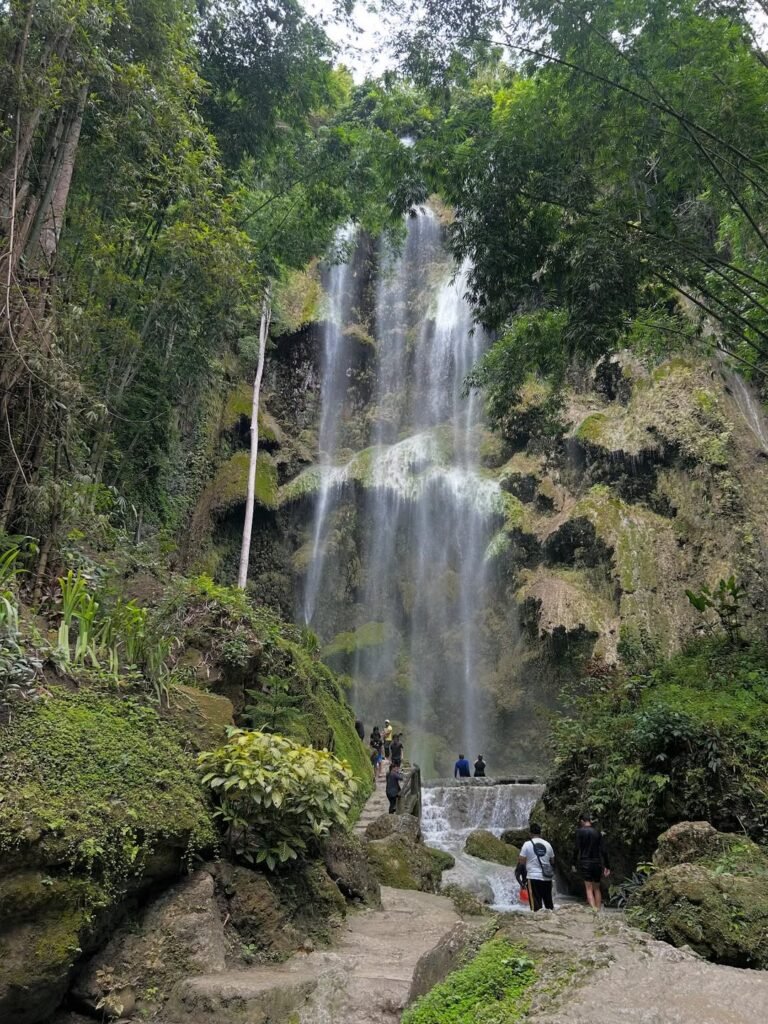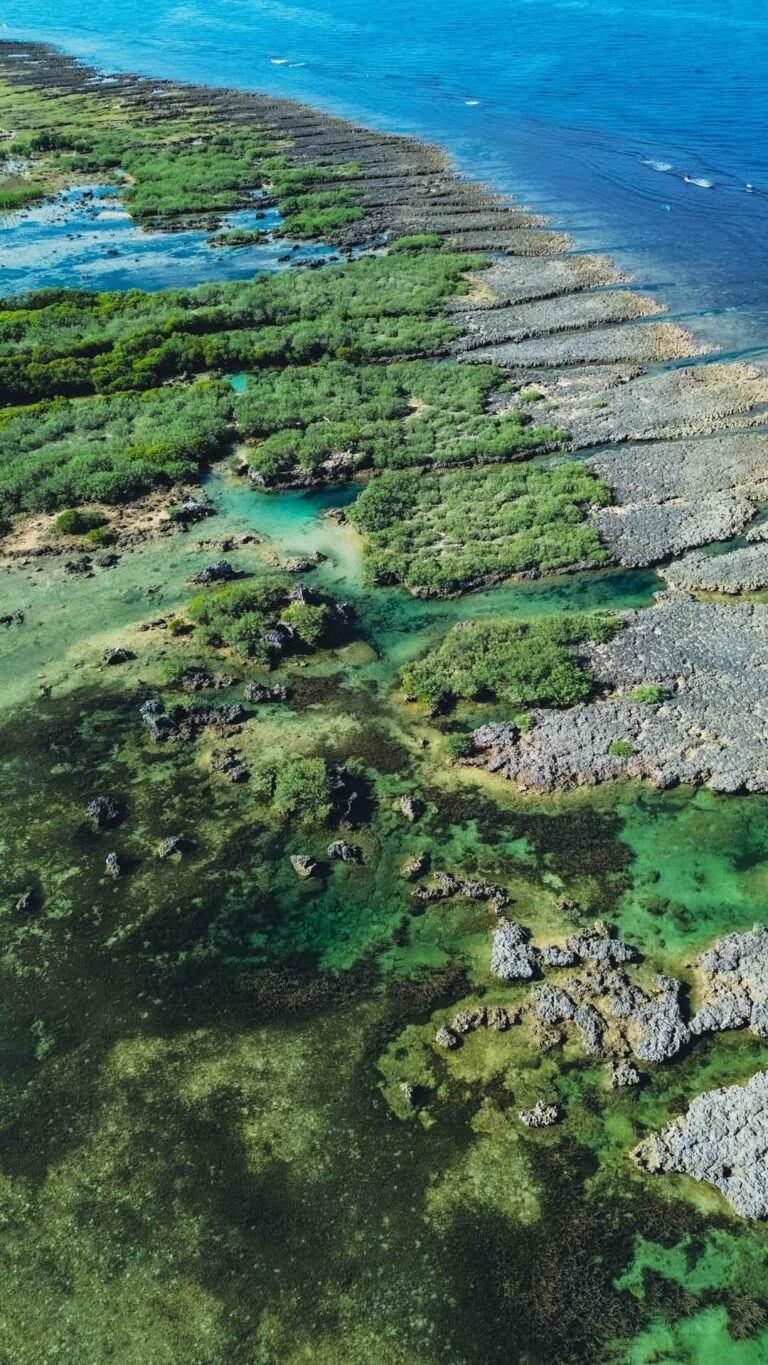
Introduction – Discovering Immuki Island
When people think of La Union, their minds usually jump straight to the surf breaks of San Juan or the busy nightlife along the coast. But tucked quietly in the town of Balaoan is a hidden gem that offers a completely different experience—Immuki Island La Union. Unlike the sandy beaches that dominate the province, Immuki is a small coral islet surrounded by turquoise lagoons and mangroves, a natural playground that feels like it was designed for slow travel and exploration.
I still remember my first glimpse of the island: shallow waters shimmering under the morning sun, mangrove trees rising from the sea, and locals guiding visitors toward the lagoons. It was nothing like the crowded tourist spots I had grown accustomed to. Instead, Immuki Island felt serene, almost untouched, and the lagoons invited me to dive in and discover what lay beneath. This contrast—between the well-known surf scene of Elyu and the calm beauty of Immuki—makes it a destination worth adding to any La Union Travele Guide.
What makes this spot stand out are its three natural lagoons, carved from coral and surrounded by mangroves. Each pool has a unique charm: some shallow enough for families with kids, others deep enough for cliff-jumping. The clarity of the water is remarkable; even without snorkeling gear, you’ll spot tiny fish darting between the rocks. For those who love documenting their travels, the island is a dream. The growing popularity of Immuki Island photos and Immuki Island aerial view shots on social media has helped bring more attention to this once-secret destination.
Whether you’re a backpacker chasing offbeat adventures, a family looking for a safe and refreshing swim, or a solo traveler seeking a quiet retreat, Immuki Island delivers. It’s proof that La Union isn’t just about surfing—it’s also about discovering peaceful corners where nature takes center stage.
Table of Contents
Immuki Island History and Location
When you step onto Immuki Island La Union, it’s easy to feel like you’ve discovered a secret place preserved by both nature and community spirit. Unlike other commercialized beaches, Immuki has grown steadily as a local-managed attraction, which is part of its charm and authenticity.
A Glimpse of Immuki Island History
The name “Immuki” is said to have come from the word “buking” or opening, referring to the natural lagoons carved into coral that form inviting pools of water. For decades, the island was known mainly to fishermen and nearby residents of Balaoan. Families would wade across during low tide to gather seaweed or enjoy a swim in the clear lagoons. It wasn’t until more recent years, when photos of the island began circulating online, that it drew attention from travelers. Today, the site has become a sustainable tourism spot, with the barangay and local community ensuring its preservation while welcoming visitors.
Role of the Local Community
One of the most inspiring things about Immuki is that it’s not run by large corporations. The people of Barangay Paraoir created a system to protect and maintain the area. Locals operate the bamboo rafts, manage registration, and enforce rules like the ban on food and drinks on the islet. The entrance fees collected are funneled back into maintaining cleanliness, protecting the mangroves, and providing basic facilities. By visiting, travelers directly support the livelihood of the community and help sustain this delicate environment.
Location and Accessibility
Geographically, Immuki Island is located in Barangay Paraoir, Balaoan, La Union. It sits just off the coast and is accessible by foot during low tide or by raft during high tide. Its location makes it an easy side trip for those already exploring the region. From San Juan La Union, it’s roughly a 30-minute drive, while from San Fernando City, the trip takes about 45 minutes. This accessibility makes it possible to combine a visit to Immuki with other northern La Union attractions like Bahay na Bato or the Luna Baluarte Watchtower.
Immuki Island’s history, shaped by its community and natural setting, ensures that it remains not only a tourist attraction but also a cultural and ecological treasure of La Union.
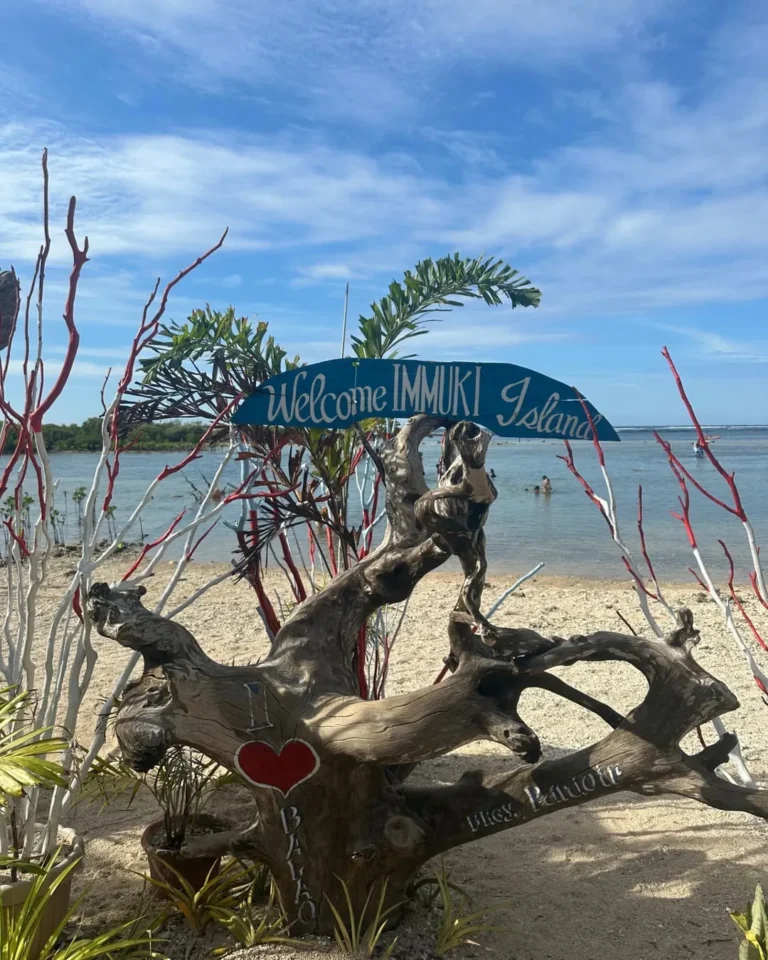
How to Go to Immuki Island
Reaching Immuki Island La Union is straightforward once you know your options. Whether you’re coming from Manila, already staying in San Juan, or exploring nearby attractions like Bahay na Bato, the journey can be tailored to your budget and travel style. Here’s a detailed breakdown based on firsthand travel experience and updated local tips.
From Manila to La Union
The most common route is to take a bus from Manila bound for Laoag, Vigan, or San Fernando, La Union. Bus companies such as Partas, Dominion, or Viron offer daily trips from terminals in Cubao or Pasay. Fares range from ₱500–₱650, depending on whether you choose a regular or deluxe bus, and the trip takes about 5–6 hours.
Once you arrive in San Fernando or San Juan, you’ll need to switch to local transport to reach Balaoan. From the San Fernando bus terminal, board a jeepney headed toward Luna or Bacnotan and ask to be dropped off at Paraoir Barangay Hall in Balaoan. Jeepney fares are usually ₱40–₱50 and travel time is about an hour.
From San Juan La Union to Immuki Island
If you’re based in the surf capital of San Juan, getting to Immuki Island is even easier. You can:
Hire a tricycle directly to Paraoir, Balaoan for ₱600–₱800 round-trip, negotiable depending on your haggling skills. This is ideal for small groups who want a hassle-free ride.
For a budget-friendly option, ride a jeepney northbound to Bacnotan for about ₱20, then transfer to another jeepney or tricycle heading to Balaoan. From Bacnotan, a tricycle to Paraoir usually costs around ₱200 per ride, good for 3–4 passengers.
Travel time from San Juan to Immuki averages 30 minutes, making it a perfect half-day escape from the busy surf scene.
From Bahay na Bato or Other Nearby Attractions
If you’re already exploring Bahay na Bato in Luna, Immuki Island is just a short detour south. You can hire a tricycle from Luna town proper for ₱150–₱200, or if you’re in a group, rent a van or car for convenience. The drive from Bahay na Bato to Immuki takes about 15–20 minutes along the coastal road.
Last Stretch: Reaching the Island
Once you arrive at Barangay Paraoir’s registration area, you can either:
Walk across the shallow flats during low tide (free), or
Take a bamboo raft (balsa) during high tide, usually ₱250 for 1.5 hours, good for 5–6 people.
Local Hacks for Budget Travelers
Travel in groups to split tricycle or raft costs.
Bring exact change for jeepneys and tricycles, as drivers often don’t carry large bills.
If you’re on a day trip, leave San Juan early in the morning to catch low tide, which makes the walk to the island easier and cheaper.

Immuki Island Entrance Fee, Opening Hours, and Cottages
One of the best things about Immuki Island La Union is how affordable and community-driven it is. The local barangay has set up a simple but effective system for managing visitors, ensuring both the preservation of the lagoons and a comfortable experience for travelers.
Entrance and Environmental Fees
Upon arrival at Barangay Paraoir, you’ll need to register at the tourism desk. The Immuki Island entrance fee is currently ₱50 for adults. Students, seniors, and persons with disabilities (PWDs) enjoy a discounted rate of ₱30, provided you bring a valid ID. This fee doubles as an environmental contribution, funding the upkeep of the mangroves, maintenance of the lagoon area, and community-led clean-up drives. Knowing that your small payment directly supports the local ecosystem and livelihoods makes the fee feel worthwhile.
Opening Hours
The island is open to visitors from 6:00 AM to 6:00 PM daily. Overnight stays and camping are not allowed, which helps keep the area pristine and prevents overuse. If you want the best conditions, arrive early in the morning when the sun is softer, the tide is usually low, and crowds are minimal. Timing your trip within opening hours is also crucial if you plan to catch a bamboo raft ride, as services stop before dusk.
Cottages and Huts
If you’re planning to spend the day, there are cottages and native huts available near the mainland registration area. These provide shade, a resting spot, and a safe place to leave belongings while you explore the lagoons. Rates vary, but simple nipa huts usually cost ₱300–₱500 for day use, while larger cottages good for families or groups can range up to ₱800. A few are available free of charge on a first-come, first-served basis, with the expectation of a small donation to the barangay.
Facilities for Visitors
Immuki Island itself is undeveloped, so don’t expect stores or toilets on the islet. However, the barangay has provided basic facilities on the mainland: public restrooms, changing rooms, and outdoor showers (usually ₱10 per rinse). These are simple but very useful after swimming in the lagoons. Bringing your own drinking water and quick-dry towels is recommended, as amenities are limited.
Overall, the fees and cottages at Immuki Island are designed to make your trip both budget-friendly and eco-friendly, ensuring this natural paradise remains well-preserved for future travelers.
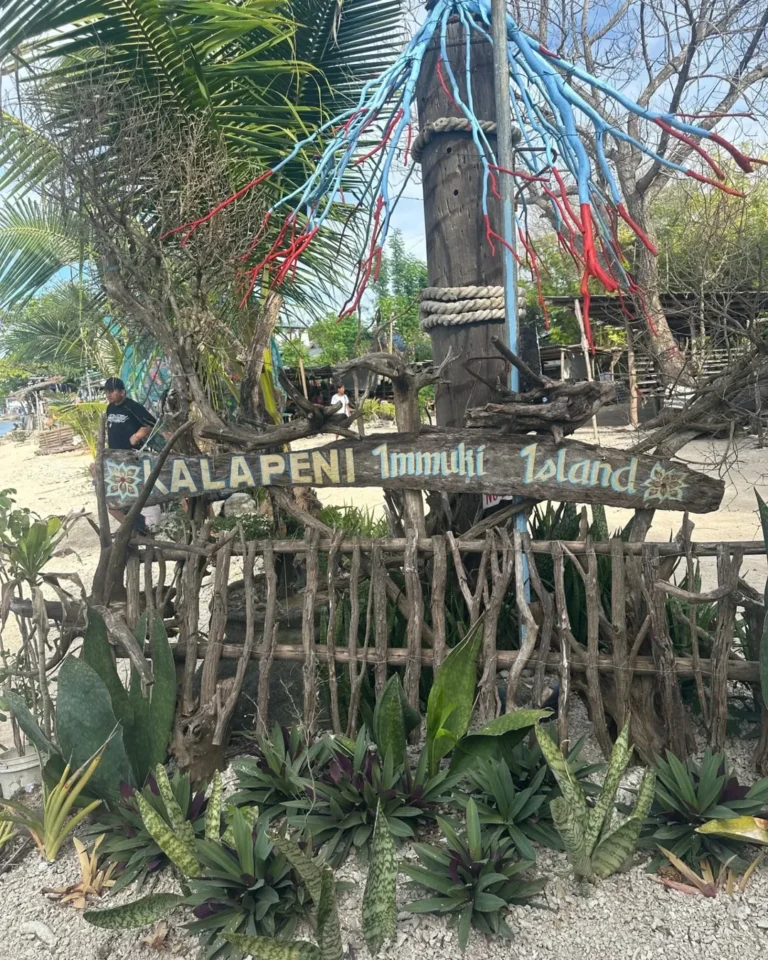
Best Time to Visit Immuki Island
Choosing the best time to visit Immuki Island can make the difference between a magical lagoon experience and a trip hampered by weather or crowds. Since the islet is directly influenced by tides and seasonal changes, timing your visit is crucial.
Dry Season vs. Rainy Season
The most ideal months are during the dry season from November to April. During this period, the skies are clearer, the seas calmer, and the lagoons shine in their most vibrant turquoise. The weather also makes the coral paths easier to walk on. By contrast, the rainy season from June to September often brings rough seas and unpredictable rains. While the island remains open, heavy rainfall can make the shallow crossing slippery and the lagoon waters cloudy. For safety and comfort, travelers are advised to avoid visiting during typhoons or continuous monsoon days.
Morning or Afternoon?
If you ask locals, they’ll tell you mornings are the perfect time. Visiting between 6:00 AM and 10:00 AM means cooler temperatures, gentler sun, and fewer visitors. The calm light also makes the lagoons sparkle in photographs. Afternoons, especially from 3:00 PM onwards, are also pleasant if you want a quieter swim after the midday heat. Just remember that the site closes strictly by 6:00 PM, so don’t plan to arrive too late.
Tide Conditions
Tides play a huge role in the experience. At low tide, you can walk across shallow flats to reach the island and comfortably wade through the lagoons. Families with children often prefer this time since the water is easier to manage. On the other hand, high tide makes the lagoons deeper, perfect for cliff-jumping and bamboo raft rides. If your goal is adventure and swimming in deeper pools, plan around the high tide schedule.
Crowd Levels
Immuki Island is still less crowded compared to San Juan, but weekends and holidays do bring more families and groups. For the most serene experience, plan a weekday trip. On my own weekday visit, I practically had one lagoon to myself—a treat that felt worlds away from La Union’s busier tourist spots.
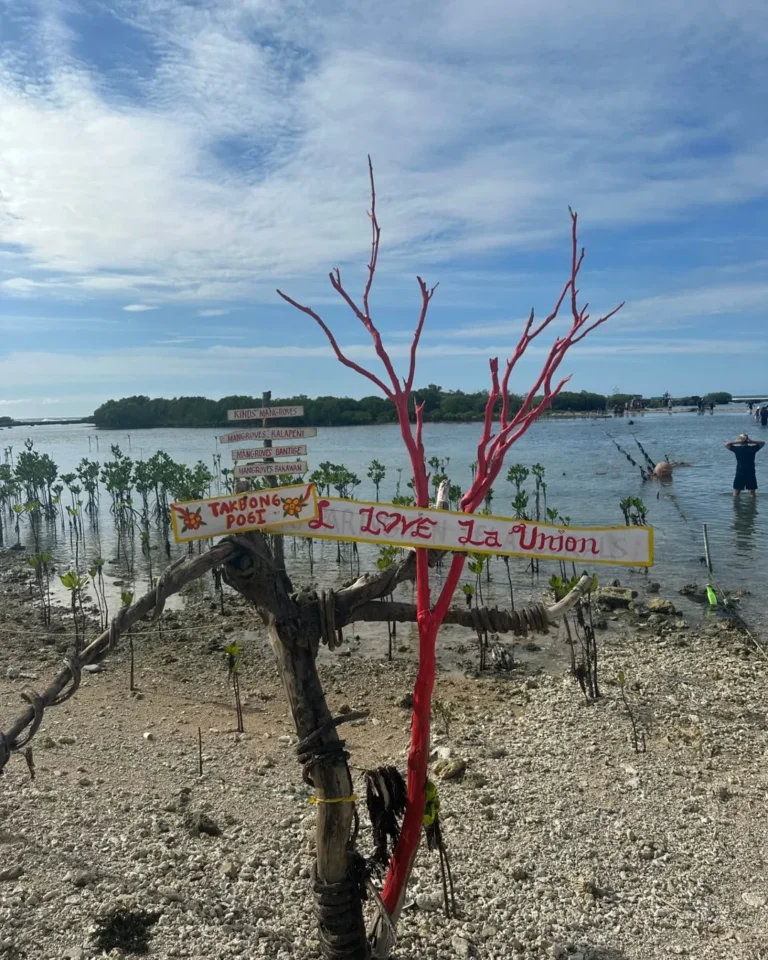
Things to Do in Immuki Island
One of the best parts of visiting Immuki Island La Union is how much you can do in such a small, natural setting. The coral islet may look simple at first glance, but once you step into its lagoons and mangroves, you’ll discover a variety of activities that make the trip worth every peso. Whether you’re here for adventure, relaxation, or photography, here’s a detailed guide on the things to do in Immuki Island.
Swimming in the Lagoons
The highlight of Immuki Island is its three natural lagoons, each shaped by coral formations and surrounded by mangroves. The water is crystal-clear, perfect for cooling off after the short walk across the flats. Families love the shallow sections where children can splash around safely, while more confident swimmers enjoy the deeper pools. The calm, sheltered waters make swimming both refreshing and relaxing.
Cliff-Jumping and Snorkeling
If you’re feeling adventurous, try cliff-jumping from the coral edges into the deeper lagoons. Some pools reach 8–12 feet, enough for a safe plunge. Just make sure to check the depth first and wear aqua shoes to protect your feet from sharp rocks. For those who prefer a slower pace, bring a snorkel mask. Even without going far, you’ll spot tiny fish darting through the corals—a reminder of why this fragile ecosystem needs to be preserved.
Bamboo Raft Rides
One of the more unique Immuki Island activities is riding a bamboo raft, or balsa. For about ₱250 per hour, a local guide will pull the raft across the lagoons and shallow channels. This is especially useful during high tide when walking isn’t possible, but it’s also a fun experience on its own. Groups often enjoy lounging on the raft while slowly gliding over turquoise waters.
Exploring Mangroves and Coral Paths
Immuki isn’t just about swimming. Take time to wander through the mangroves and coral paths that weave around the lagoons. The mangrove roots create a natural maze where you’ll encounter tiny crabs, shells, and mudskippers. Walking carefully through these paths feels like stepping into another world—quiet, green, and brimming with life.
Photography Spots
With its unique setting, the island is a haven for photographers. The turquoise pools, dark green mangroves, and rugged coral rocks make striking contrasts. Immuki Island photos are popular on Instagram, especially wide shots that capture all three lagoons. If you have a drone, the Immuki Island aerial view is breathtaking—the mangroves look like emerald patches floating on clear blue water. Even with just a phone camera, expect postcard-worthy shots.
Sea Urchin Farm Tour and Tasting
For something truly local, consider a short trip to the sea urchin farms near Immuki Island. Balaoan is known as the “Sea Urchin Capital of La Union,” and some guides offer tours for groups. Here you’ll see how urchins are raised and harvested. If you’re adventurous, taste freshly opened uni, seasoned only with vinegar or calamansi. It’s an ocean-to-table experience you won’t find in many other tourist spots.
Safety Tips to Remember
While Immuki Island is generally safe, a few precautions can make your visit smoother:
Wear aqua shoes to protect your feet from sharp coral.
Check lagoon depth before cliff-jumping.
Rent a life vest (₱20–₱30) if you’re not confident in the water.
Bring drinking water since no shops exist on the islet itself.
Follow local rules: no food, no pets, and no littering.
Final Thoughts
Immuki Island may not be as large or developed as other destinations, but its charm lies in its simplicity. Swimming, cliff-jumping, bamboo raft rides, and wandering through mangroves make for a well-rounded day. Add in the unique sea urchin tasting and stunning photo opportunities, and you’ll understand why this spot is gaining attention. Whether you’re after relaxation or adventure, Immuki Island activities offer something memorable for every traveler.
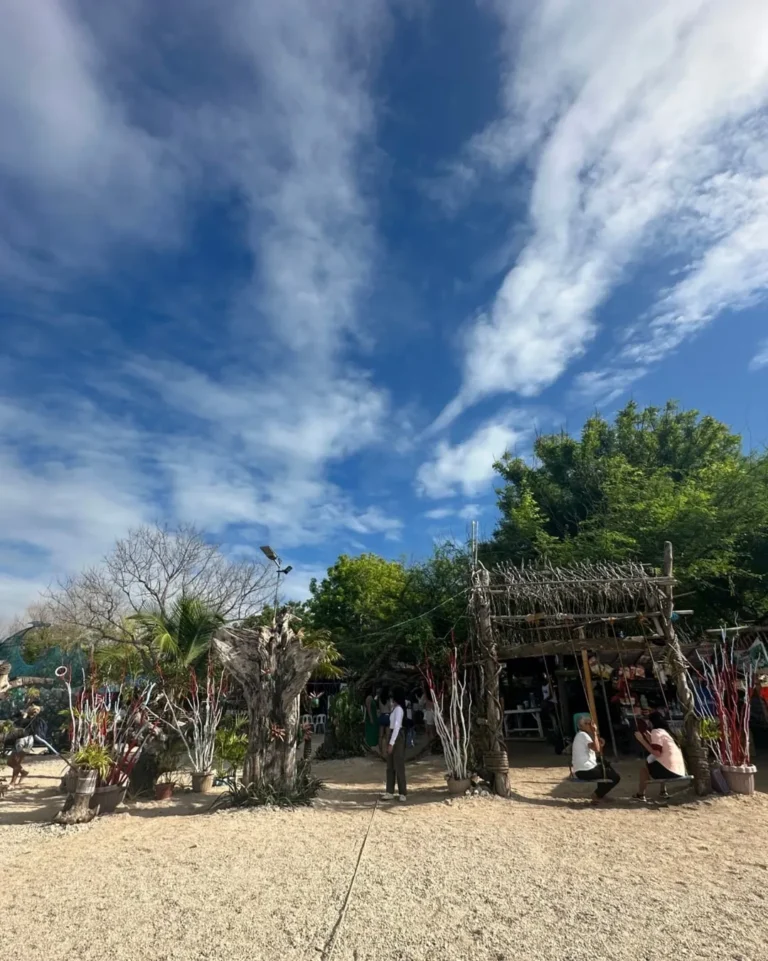
Where to Stay – Immuki Island Accommodation
Since Immuki Island La Union is a day-trip destination, overnight stays on the islet itself are not permitted. But don’t worry—there are plenty of nearby options that suit budget travelers, families, and backpackers. Whether you want a quiet night close to the lagoons or a more vibrant stay near the surf town of San Juan, you’ll find accommodations that fit your needs.
Homestays and Beach Huts in Balaoan
For those who want to stay closest to the island, the best choice is to look for Immuki Island accommodation in Barangay Paraoir, Balaoan. Locals have started offering simple homestays and native beach huts right by the shoreline. These are very basic—think fan-cooled rooms, nipa cottages, or small houses for rent—but they give you an authentic provincial vibe and easy access to the lagoons early in the morning. Rates typically range from ₱800–₱1,500 per night, depending on the size of the hut or room. If you’re traveling as a group, ask about whole-house rentals, which are often more affordable when split among friends.
Resorts in Luna and Bacnotan
If you prefer more facilities, check out small resorts in Luna or Bacnotan, both neighboring towns. In Luna, you can find beach resorts near Darigayos or the famous pebble beach. These offer simple rooms with private bathrooms, beach access, and sometimes even small restaurants. Prices usually start around ₱1,200–₱2,000 per night. Bacnotan, on the other hand, has a few coastal accommodations that cater to travelers looking for a quieter alternative to San Juan, but still close enough to reach the surf town in 15 minutes.
Staying in San Juan for Food and Nightlife
Most travelers base themselves in San Juan La Union, about 30 minutes from Immuki. San Juan offers the widest range of options—from backpacker hostels like Circle Hostel and Flotsam & Jetsam (₱500–₱800 for dorm beds) to mid-range resorts such as Sebay Surf Central or Kahuna Beach Resort. The big advantage of staying here is access to San Juan’s famous nightlife, restaurants, and surf scene, while still being close enough for a day trip to Immuki.
Budget Tips
Book in advance during weekends and holidays since La Union fills up quickly.
If traveling in a group, split tricycle rides and hut rentals to save on costs.
Stay in San Juan if you want variety, but choose Balaoan or Luna if you prefer quiet mornings and proximity to the lagoons.
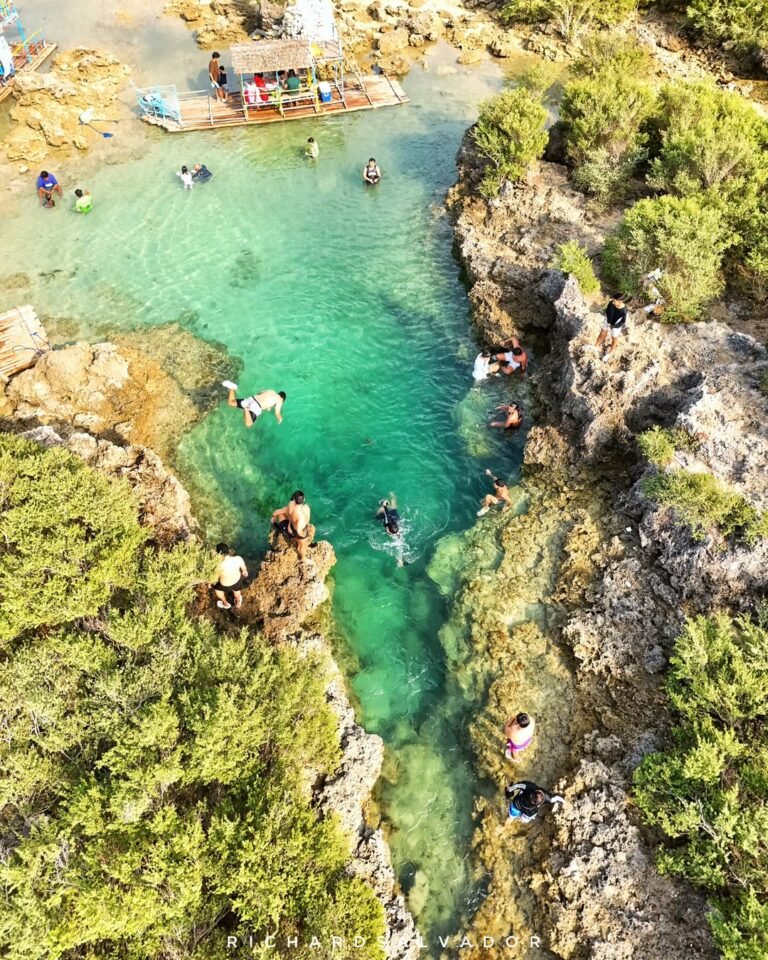
Where to eat in Immuki Island
A trip to Immuki Island La Union isn’t just about swimming in lagoons—it’s also about tasting the flavors that make this part of La Union unique. While the island itself doesn’t have restaurants, you’ll find simple snacks and authentic local dishes in the nearby communities.
Snacks from Local Sari-Sari Stores
Right after exploring the lagoons, you can grab refreshments from small sari-sari stores near the registration area. Expect cold sodas, chips, and ice candy—perfect for a quick energy boost. Some vendors also sell grilled snacks like fish balls or corn on the cob. These simple bites may not be fancy, but they capture the laid-back, local vibe of the barangay.
Balaoan’s Sea Urchin Delicacy
If you want something more adventurous, don’t miss the sea urchin delicacy of Balaoan. Known as the “Sea Urchin Capital of La Union,” locals often serve freshly cracked urchins with vinegar or calamansi. For seafood lovers, it’s a one-of-a-kind treat and a true taste of Immuki’s coastal culture. Some guides even arrange sea urchin farm visits where you can see how they’re harvested and try uni straight from the shell.
Ilocano Comfort Food in Nearby Towns
Travel a bit inland and you’ll find carinderias serving Ilocano specialties such as pinakbet, dinengdeng, and igado. These hearty meals are inexpensive, usually ₱100–₱150 per plate with rice, making them perfect for budget travelers. Street food like isaw (grilled chicken intestines) and empanada are also widely available in Luna and Bacnotan, great for a quick bite on your way back.
Halo-Halo de Iloko in San Fernando
If you’re heading south after your Immuki trip, make a stop at Halo-Halo de Iloko in San Fernando. Their famous halo-halo, packed with native ingredients and served in a coconut shell, is a must-try. It’s the perfect sweet ending after a salty swim at the lagoons.
Eating near Immuki Island may be simple, but the mix of local snacks, Ilocano classics, and unique seafood makes the experience unforgettable.
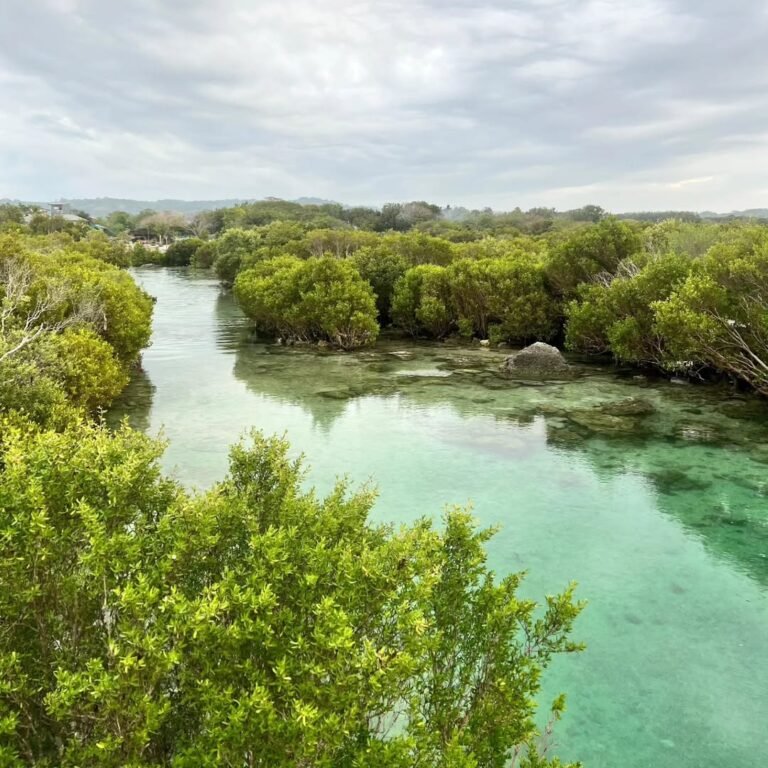
Nearby Attractions to Add to Your Itinerary
While Immuki Island La Union can easily fill a day with swimming and exploring, its location in Balaoan makes it an excellent jump-off point for other must-see spots in northern La Union. If you want to maximize your trip, here are nearby attractions worth adding to your itinerary.
Darigayos Beach
Just a few minutes north of Balaoan lies Darigayos Beach, a quiet stretch of coastline with fine sand and calm waters. Unlike the busier surf beaches, Darigayos is laid-back, making it perfect for those who want to relax or enjoy a picnic by the shore. On certain months, it also becomes an alternative surf spot when swells roll into the bay.
Baluarte Watchtower
In the town of Luna, about 15–20 minutes from Immuki, you’ll find the historic Baluarte Watchtower. Built during the Spanish colonial era, this brick tower served as a lookout against pirate attacks. Today, it stands as a cultural landmark and a picturesque backdrop for photos, especially at sunset.
Bahay na Bato and Luna Pebble Beach
Another Luna highlight is the Bahay na Bato, a stone house-turned-art space that showcases intricate sculptures and mosaics made from the town’s famous pebbles. Just outside, the shoreline is covered with smooth multi-colored stones, giving Luna its reputation as the “Pebble Capital of the North.” Visitors can explore the art installations, take photos, and bring home small souvenirs made from local materials.
Namacpacan Church
For travelers interested in heritage, the Namacpacan Church in Luna is also worth a stop. Officially known as the St. Catherine of Alexandria Parish, this 19th-century church is famous for housing the miraculous image of Our Lady of Namacpacan. Pilgrims and tourists alike visit for prayer and to admire its unique architecture.
San Juan Surf Town
If you’re craving nightlife and modern comforts, head back south to San Juan La Union. Known as the surfing capital of the north, San Juan offers surf lessons (around ₱400–₱500 per hour with board rental) and a vibrant stretch of restaurants, cafés, and beach bars. It’s the perfect contrast to Immuki’s calm atmosphere—ideal if you want both serenity and energy in one trip.
Tangadan Falls
For those with extra time, venture inland to Tangadan Falls in San Gabriel. About an hour from Balaoan or 40 minutes from San Juan, this popular waterfall requires a scenic trek through rivers and hanging bridges. The reward is a stunning cascade with a natural swimming basin, great for cliff-diving or simply cooling off in fresh mountain water.
Adding these attractions ensures that your Immuki Island trip transforms into a full La Union adventure, combining history, culture, relaxation, and adventure in one itinerary.
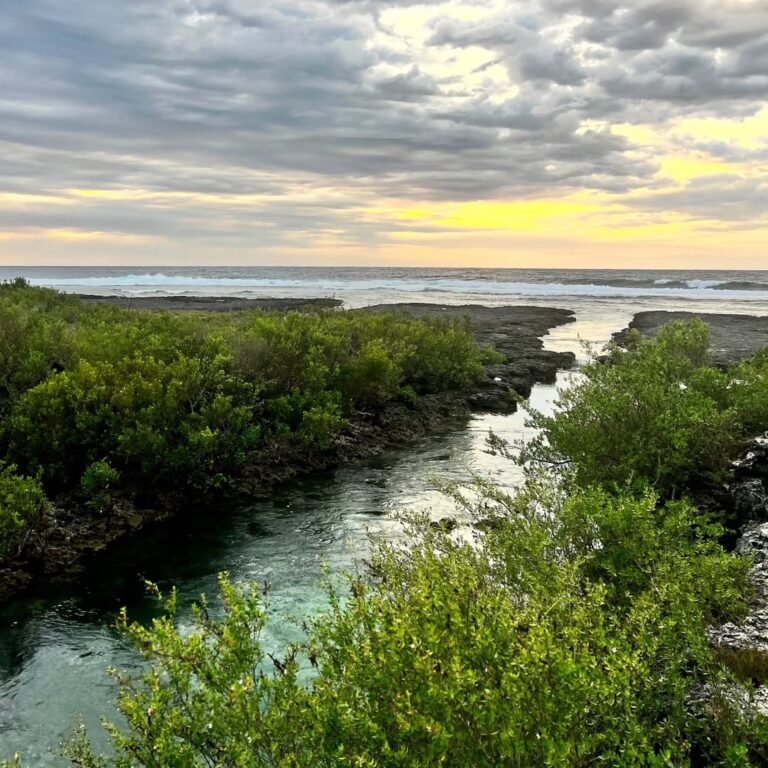
Travel Tips and Local Hacks
Like many offbeat destinations, Immuki Island La Union rewards those who come prepared. The lagoons are stunning, but because the area is still community-managed and relatively undeveloped, travelers need to know a few practical things to make their visit smooth and enjoyable. Here are some tried-and-tested tips I recommend from experience.
What to Bring
The first thing on your list should be aqua shoes. The coral rocks and shallow flats can be sharp, and wearing proper footwear makes exploring much easier. Bring reef-safe sunscreen to protect both your skin and the delicate marine life. A reusable water bottle, a quick-dry towel, and light snacks for after your swim are also useful—just remember that food isn’t allowed on the islet itself, so keep them for the mainland cottages.
Safety and Environmental Reminders
Immuki Island is small but fragile, so follow the no food, no pets, and no littering rules. Always bring back what you take, and avoid touching or stepping on live corals. If you plan to cliff-jump, check the water depth first. Life vests are available for rent at around ₱20–₱30, which is a good option for kids or non-swimmers.
Cash is King
Keep in mind that cash-only transactions are the norm here. From the entrance fee to tricycle rides and bamboo raft rentals, most services won’t accept digital payments. Bring small bills and coins, as locals often don’t have change for large denominations.
How to Avoid Crowds
If you want the lagoons all to yourself, come early in the morning on a weekday. From my own trip, arriving before 9:00 AM meant I shared the entire lagoon with just one other group. Weekends and holidays are busier, but even then, Immuki Island is less crowded than San Juan’s beaches. Timing your visit with low tide also helps, since you can walk to the island instead of waiting for a raft.
By keeping these simple hacks in mind, you’ll not only enjoy Immuki Island more but also help preserve its beauty for future travelers.
Conclusion – Why Immuki Island Should Be on Your La Union Itinerary
Every trip to La Union tells a different story, and Immuki Island La Union adds a chapter that’s unlike the rest. While San Juan is famous for its surf breaks and nightlife, Immuki offers the opposite—serenity, nature, and a sense of discovery. With its turquoise lagoons, coral rock formations, and thick mangrove forests, the island is a refreshing change of pace from the province’s more crowded tourist spots.
The beauty of Immuki lies in its simplicity. You won’t find high-end resorts or flashy attractions here; instead, you’ll swim in clear lagoons, jump into natural pools carved by the sea, or float on a bamboo raft pulled gently across the water. Add in the unique experience of tasting fresh sea urchin and exploring coral pathways, and you have a destination that’s both adventurous and authentic. These Immuki Island activities make it ideal for backpackers seeking hidden gems, families looking for safe natural pools, and day-trippers who want to explore beyond the surf town.
What makes the island even more special is the local community’s role in preserving it. The simple entrance fee supports environmental care and ensures the mangroves remain healthy for future generations. By following the rules—no littering, no food on the islet, and respectful use of the facilities—you contribute to sustainable tourism that benefits both residents and the ecosystem.
So if you’re planning your northern Luzon getaway, make sure to add Immuki to your La Union itinerary. It’s the kind of place where you can disconnect from the busy world, reconnect with nature, and leave with a memory that feels both peaceful and extraordinary. For me, that’s exactly what makes Immuki Island worth the trip—and why I’d recommend it to anyone exploring La Union.
Frequently Asked Questions About Immuki Island La Union
Visiting Immuki Island La Union can be both exciting and a little overwhelming if it’s your first time. To help you plan, here’s a detailed FAQ section that covers the most common traveler questions with practical tips and local insights.
What is Immuki Island known for?
Immuki Island is famous for its three natural lagoons, mangrove clusters, and coral rock formations. Unlike the surf beaches of San Juan, it offers calm waters ideal for swimming, snorkeling, cliff-jumping, and bamboo raft rides. Its raw beauty and crystal-clear waters have made it a rising eco-tourism destination in La Union.
How much is the Immuki Island entrance fee?
The Immuki Island entrance fee is ₱50 for adults. Students, senior citizens, and PWDs pay a discounted rate of ₱30. This fee also serves as an environmental contribution, helping the local barangay maintain the site and protect the mangroves.
What are the Immuki Island opening hours?
The island is open from 6:00 AM to 6:00 PM daily. Overnight stays and camping are not allowed to preserve the natural environment. It’s best to visit early in the morning to avoid crowds and enjoy cooler weather.
How do I get to Immuki Island from San Juan?
From San Juan La Union, you can either:
Hire a tricycle directly to Paraoir, Balaoan for ₱600–₱800 round-trip (ideal for groups), or
Take a jeepney to Bacnotan for about ₱20, then transfer to a tricycle heading to Barangay Paraoir for around ₱200. Travel time is about 30 minutes.
Are there cottages or huts available?
Yes. Near the registration area on the mainland, you’ll find native cottages and nipa huts. Rates start around ₱300–₱500 for day use, while larger huts may cost up to ₱800. Some are free on a first-come, first-served basis, but donations are encouraged.
What should I bring when visiting Immuki Island?
Pack aqua shoes (to protect your feet from sharp coral), reef-safe sunscreen, a reusable water bottle, and a quick-dry towel. Food and drinks are not allowed on the islet, but you can enjoy them at the mainland cottages after your swim.
Is Immuki Island safe for kids and non-swimmers?
Yes. The lagoons have shallow areas suitable for children. Life vests are available for rent (₱20–₱30). Always supervise kids closely, especially near deeper pools.

